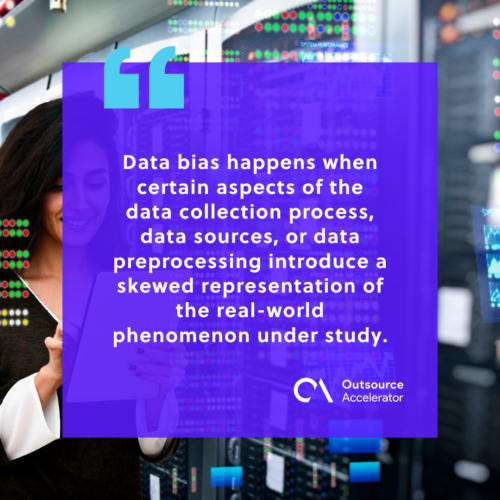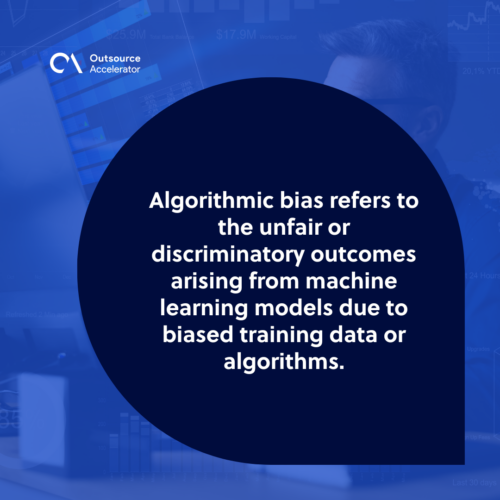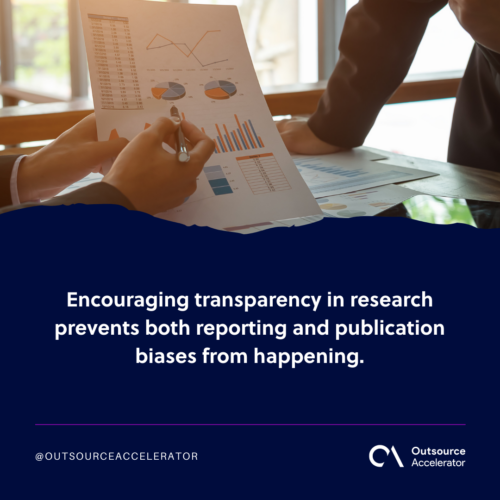Types of data bias you should know (and how to avoid them)

Your data quality plays a changing role in the accuracy and fairness of your decisions throughout your operations.
It dictates what your actual target market is, how you can interact with your customers and employees, and how you can make them stay with your brand.
However, data bias is a pervasive challenge that undermines the reliability and ethicality of your decisions. This negatively impacts your operations, from unintentional discrimination to compromised trust among your customers.
This article explores the types of data bias to be aware of and practical techniques to avoid them.
Defining data bias
Data bias refers to the systematic error present in a data set that leads to inaccurate or unfair outcomes.
Data bias happens when certain aspects of the data collection process, data sources, or data preprocessing introduce a skewed representation of the real-world phenomenon under study.
An example of this appears in a news report by Reuters. Here, a global exam grade algorithm compromised International Baccalaureate (IB) students’ grades, giving them lower than what their performance outcomes intended.
Data scientists, machine learning practitioners, and decision-makers should learn how to manage data and its complexities.
Understanding these nuances allows you to design better strategies to ensure fairness, accuracy, and ethical considerations in your analyses.

Types of data bias to watch out for
Data bias can occur in different ways, depending on the form your company deals with. This includes the following:
Selection bias
Selection bias is a statistical bias that occurs when certain samples in a data set are systematically chosen, leading to a distorted representation of the target population.
This comes from cognitive bias out of data stitched together instead of having them carefully structured. As a result, some of the samples are excluded from your analysis, such as certain demographics, races, or populations.
Sampling bias
As another form of statistical bias, sampling bias arises when the process of collecting or selecting data introduces unintended distortions in the data set.
It occurs when the sampling method fails to capture the target population’s characteristics accurately.
Measurement bias
Measurement bias occurs when the instruments or techniques used to collect data introduce systematic errors. This usually stems from faulty instruments, inconsistent measurement procedures, or observer bias.
Reporting bias
Reporting bias happens when there is a selective inclusion or exclusion of data or results based on perceived importance or significance.
This usually occurs out of publication bias, where studies with significant results are more likely to be published. Publication bias leads to an overrepresentation of certain findings in the literature.
Algorithmic bias
Algorithmic bias refers to the unfair or discriminatory outcomes arising from machine learning models due to biased training data or algorithms.
This can exacerbate existing societal biases and discrimination. An analysis by the think tank Brookings shows how algorithms replicate – and even amplify – human biases in different aspects of life.

Confirmation Bias
Confirmation bias occurs when data is interpreted in a way that confirms your pre-existing hypotheses while downplaying contradictory evidence.
As a result, you tend to cherry-pick the outcomes of your studies and draw doubtful conclusions.
Teach your researchers to maintain an open and unbiased mindset to prevent this bias. Encourage them to engage in peer review and collaborative discussions to ensure a comprehensive and objective analysis.
How you can avoid data bias in machine learning
While you cannot fully eliminate data bias, there are still ways to avoid and minimize its impacts on your machine-learning efforts. You can apply the following measures for this.
Diversify data collection
Ensure that your data collection process captures the diversity and representativeness of your target market. Collect data from different sources and include various samples to avoid skewed or incomplete representations.
Incorporate sampling techniques
Employ appropriate sampling techniques in your studies to minimize the impact of sampling bias. Randomly selecting data points can help you ensure a more balanced representation of the market you are analyzing.
For instance, think tanks have some of the best practices for sampling the population of the location they are studying.
Published balanced results
Encouraging transparency in research prevents both reporting and publication biases from happening. You can do this by publishing both positive and negative results in your products and fostering open science practices.

Use updated research instruments
Always make sure to use updated instruments and standardized measurement protocols to minimize your measurement bias. Regularly calibrate your methods as needed and provide clear instructions for this.
Maintain human intervention
Maintain human intervention in machine learning to evaluate your data for representativeness and diversity carefully. This helps you to incorporate fairness in considerations during the model development and validation stages.







 Independent
Independent




